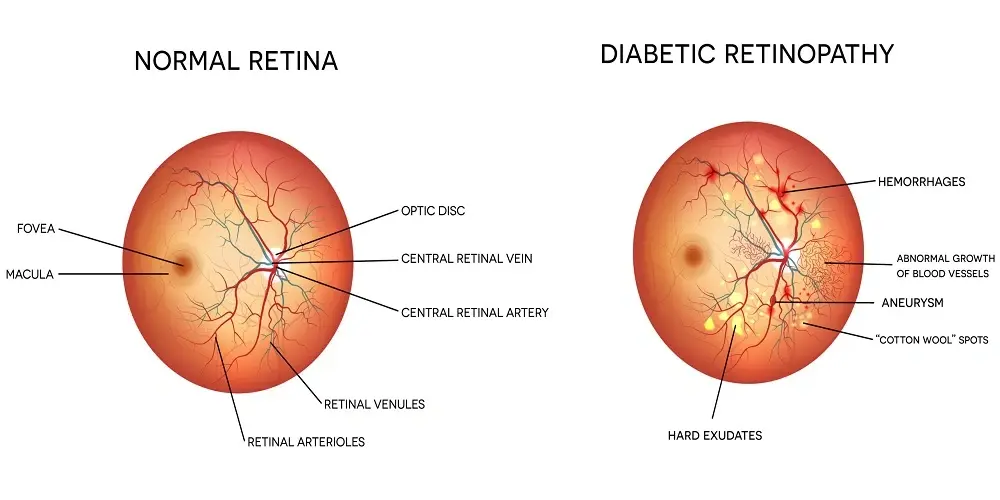
PROMO!
First order? Get 10% OFF with this code: 1storder

Diabetes affects millions of people around the world and leads to serious health problems. Research shows that the ARA-290 peptide may help ease some of these problems.
It targets special receptors in damaged tissues. Studies suggest it may reduce neuropathic symptoms and improve nerve health in people with diabetic nerve damage. In recent years, ARA-290 peptide research has helped us better understand how to treat diabetes-related issues.
At the same time, studies are closely checking for any safety issues as research moves forward. These peptides are made only for research use and are not for human use.
Animal studies using knockout mice have helped researchers learn how this peptide works. In clinical trials, there was statistical significance when comparing nerve function between the treatment groups and the control groups.
To understand how ARA-290 peptide works, it’s important to look at the condition it’s designed to target in research.
Explore ARA-290 Peptide from Peptide Works, a synthetic peptide studied for easing neuropathic symptoms and promoting nerve regeneration.

Diabetic neuropathy means nerve damage caused by diabetes. High blood sugar harms small blood vessels that supply nerves. When these vessels are damaged, they can’t bring enough oxygen to nerve tissue.
Over time, this leads to numbness, tingling, and burning feelings. There are three main types: peripheral, autonomic, and focal neuropathy. Peripheral neuropathy is the most common. It usually affects the hands and feet.
Poor control of blood sugar makes this condition more likely. Up to 50% of people with diabetes will develop some form of neuropathy.
Research into MOTS-c shows it may enhance insulin sensitivity and improve glucose metabolism in diabetic patients.
Among the types of neuropathy, learning why peripheral neuropathy follows a certain pattern helps us understand why it can be so serious.
Explore MOTS-c from Peptide Works, a mitochondrial peptide researched for improving glucose metabolism, insulin sensitivity, and heart protection in diabetes models.
Peripheral neuropathy affects the longest nerves first because they need more energy. These nerves, found in the feet and hands, get less blood flow than shorter nerves. High blood sugar causes nerve damage by harming the tiny blood vessels that feed these distant nerve endings.
Symptoms start as numbness, tingling, and burning in the toes. ARA-290 peptide research shows promise for treating small nerve fiber loss in these areas.
The study shows that up to 50% of diabetic patients get peripheral neuropathic pain, compared to results in the placebo group. MOTS-c peptide treatment also helps prevent obesity and hyperinsulinemia caused by high-fat diets in research models.
When these distant nerve fibers are damaged, the effects go beyond just numbness in the hands and feet.

Lost nerve fibers create serious problems throughout the body. Tissue injury from prolonged high blood sugar contributes to progressive nerve dysfunction. Individuals lose their ability to sense temperature changes properly. Sharp stabbing pain and electric shock sensations become common.
The body cannot control sweating, heart rate, or blood pressure normally. Muscle weakness develops as nerve connections disappear completely. Activation of the innate immune response contributes to nerve inflammation and damage progression.
The immune response to nerve injury can worsen neuropathic symptoms and chronic pain. Research shows quality of life and mental health drop significantly due to chronic neuropathic pain.
Conditions like neuritic dystrophy provide insight into nerve degeneration mechanisms similar to diabetic neuropathy. ARA-290 peptide studies demonstrate effect of ara in reversing some nerve damage.
MOTS-c helps regulate glucose balance and prevents hyperinsulinemia in laboratory studies of diabetic complications.
The loss of autonomic control becomes particularly dangerous when it affects the cardiovascular system, creating life-threatening complications.
Small fiber damage disrupts the central nervous system control over cardiovascular functions. Damaged autonomic nerves cannot regulate heart rate properly. This causes resting tachycardia. Orthostatic hypotension develops when patients stand up quickly from sitting positions.
The sympathetic and parasympathetic balance becomes severely disturbed in these cases. Published clinical studies of metabolic control show improvements. These may help prevent adverse events.
Derivatives of recombinant human erythropoietin, like ARA-290 peptide, target innate repair receptor pathways. Researchers order from Peptide Works because we sell high-quality peptides with worldwide shipping.
These cardiovascular changes create immediate symptoms. Patients notice them during daily activities, especially when changing positions.

Standing dizziness occurs when blood pressure falls by at least 20 mmHg systolic or 10 mmHg diastolic during position changes. Meta-analysis indicates orthostatic hypotension affects about 24% of diabetic patients.
Damaged autonomic nerves cannot tighten blood vessels quickly enough when standing. Clinical evaluation shows significant differences in vascular response across patient groups. Symptoms include lightheadedness, visual dimming, and head or neck discomfort.
MOTS-c research demonstrates improved glucose tolerance and insulin secretion that may help prevent diabetic complications.
The visual symptoms that accompany dizziness reveal how blood flow problems affect multiple organ systems simultaneously.
Dark vision happens because blood flow drops suddenly to the ophthalmic artery. Reduced oxygen reaches retinal tissue, causing temporary vision blackouts lasting seconds. This serious side effects condition affects diabetic patients more than normal human volunteers.
The epo receptor pathway may influence vascular response during position changes. Future studies examine how ARA-290 peptide affects retinal blood flow patterns.
Current study findings show significant improvement in autonomic function with peptide treatments. Peptide Works supplies these research compounds to laboratories conducting vascular studies globally.
These temporary vision changes often signal broader problems with retinal blood circulation that require comprehensive evaluation.

Eye doctors measure corneal nerve fiber density using special microscopes. This helps find early damage. The test shows nerve loss before symptoms of small fiber neuropathy in vision appear.
Diabetes mellitus causes significant changes in retinal photographs. Trained specialists can easily see these changes.
Patients often have night blindness, glare sensitivity, and trouble focusing on close objects. Clinical trial data shows these vision changes often happen before major complications. This highlights the importance of early detection.
ARA-290 peptide research studies how to protect corneal nerve fibers in lab models. Eye exams that find problems early help prevent bad outcomes in diabetic patients.
Night vision problems are among the first and most noticeable symptoms that patients can monitor at home.
High glucose levels reduce rhodopsin production, the protein that helps eyes adjust to darkness. Diabetic patients often require brighter light and longer adaptation time to focus clearly in low-light conditions.
Rod cells in the retina become damaged first, affecting peripheral and low-light vision. This creates difficulty driving at night, reading in dim light, or navigating stairs. General health screenings often miss early night vision changes when not specifically asked about low-light tasks.
ARA-290 peptide research examines suppression of the spinal microglia response that may protect retinal cells. These symptoms often present early in diabetic eye disease progression, making prompt evaluation critical.
Advanced peptide research using specific amino acid sequences shows promise for diabetic complications in many body systems. New delivery methods like glucose-responsive systems and pH-sensitive coatings improve how well peptides work.
MOTS-c shows strong benefits for diabetes management by improving insulin sensitivity and glucose metabolism. It also delays the onset of autoimmune diabetes by protecting pancreatic β-cells through targeted cellular pathways.
Researchers believe that bifunctional agonists such as tirzepatide will become more common in treating diabetes. Nanoparticle technology improves peptide stability and absorption. It also lowers how often doses are needed.
Results of these studies encourage research labs around the world to keep developing peptides. These target nerve protection, heart health, and blood sugar control at the same time.
These new therapies are potential clinical use cases that may change how we treat diabetes in the next ten years.
Thank you for reading How can ARA-290 Peptide Help Diabetic Patients? from Peptide Works a reliable peptide supplier for research purposes online.
[1] Brines M, Dunne AN, van Velzen M, Proto PL, et al. ARA 290, a nonerythropoietic peptide engineered from erythropoietin, improves metabolic control and neuropathic symptoms in patients with type 2 diabetes. Mol Med. 2015 Mar 13;20(1):658-66.
[2] Wang RL, Yang ZH, Huang YY, Hu Y, et al. Erythropoietin-derived peptide ARA290 mediates brain tissue protection through the β-common receptor in mice with cerebral ischemic stroke. CNS Neurosci Ther. 2024 Mar;30(3):e14676.
[3] Al-Onaizi MA, Thériault P, Lecordier S, Prefontaine P, et al. Early monocyte modulation by the non-erythropoietic peptide ARA 290 decelerates AD-like pathology progression. Brain Behav Immun. 2022 Jan;99:363-382.
[4] Kong BS, Lee C, Cho YM. Mitochondrial-Encoded Peptide MOTS-c, Diabetes, and Aging-Related Diseases. Diabetes Metab J. 2023 May;47(3):315-324.
ALL CONTENT AND PRODUCT INFORMATION AVAILABLE ON THIS WEBSITE IS FOR EDUCATIONAL PURPOSES ONLY.
DISCLAIMER: These products are intended solely as a research chemical only. This classification allows for their use only for research development and laboratory studies. The information available on our Peptide Works website: https://peptide-works.com/ is provided for educational purposes only. These products are not for human or animal use or consumption in any manner. Handling of these products should be limited to suitably qualified professionals. They are not to be classified as a drug, food, cosmetic, or medicinal product and must not be mislabelled or used as such.
Peptide Works
Related Articles

Could Orexin A peptide Treat Daytime Fatigue?
Waking up tired frustrates many people. Dragging through a full day with heavy eyes and slow focus makes work and

How can the Adamax Peptide help Chronic Inflammation?
Chronic inflammation acts like a fire that never stops burning. It slows recovery, drains energy, and blocks proper tissue repair.

Can Vitamin B12 Immune System Support Enhance the Effects of Thymosin Alpha-1?
The Vitamin B12 immune system link is important because this vitamin plays a crucial role in DNA synthesis, methylation, energy